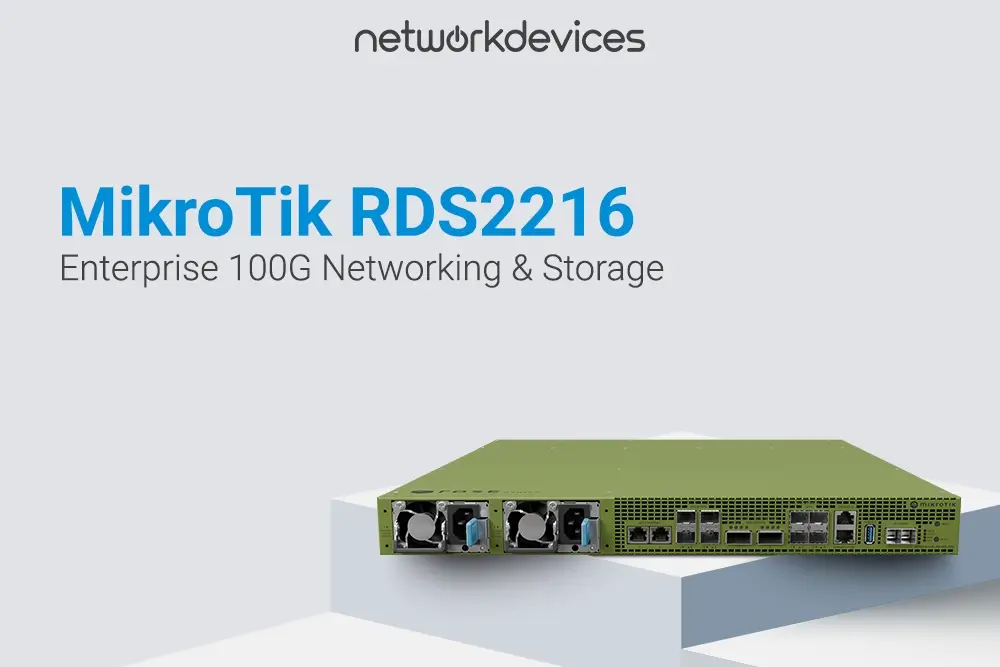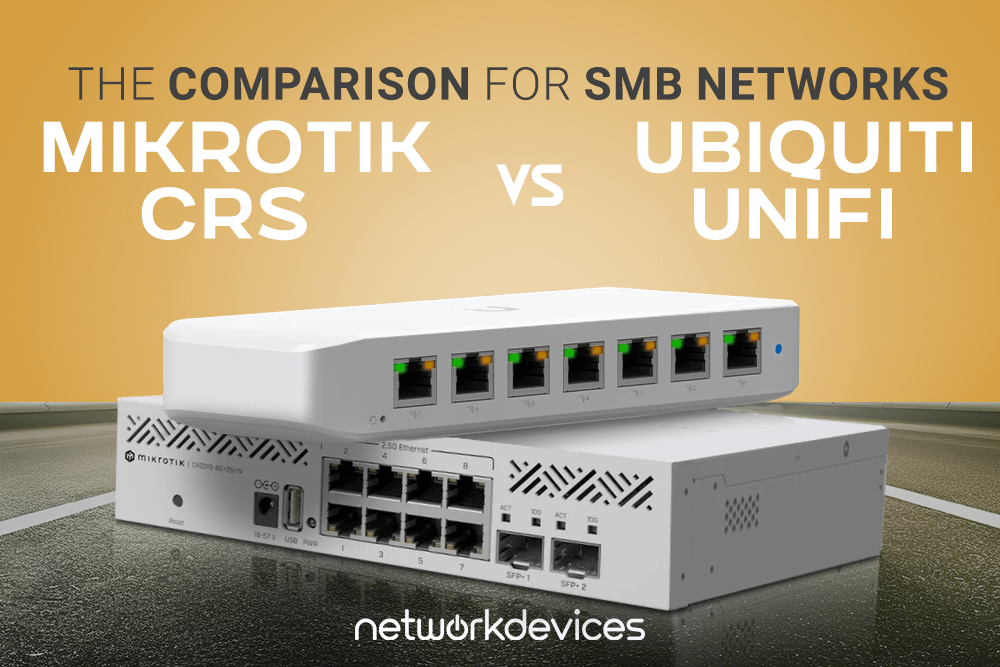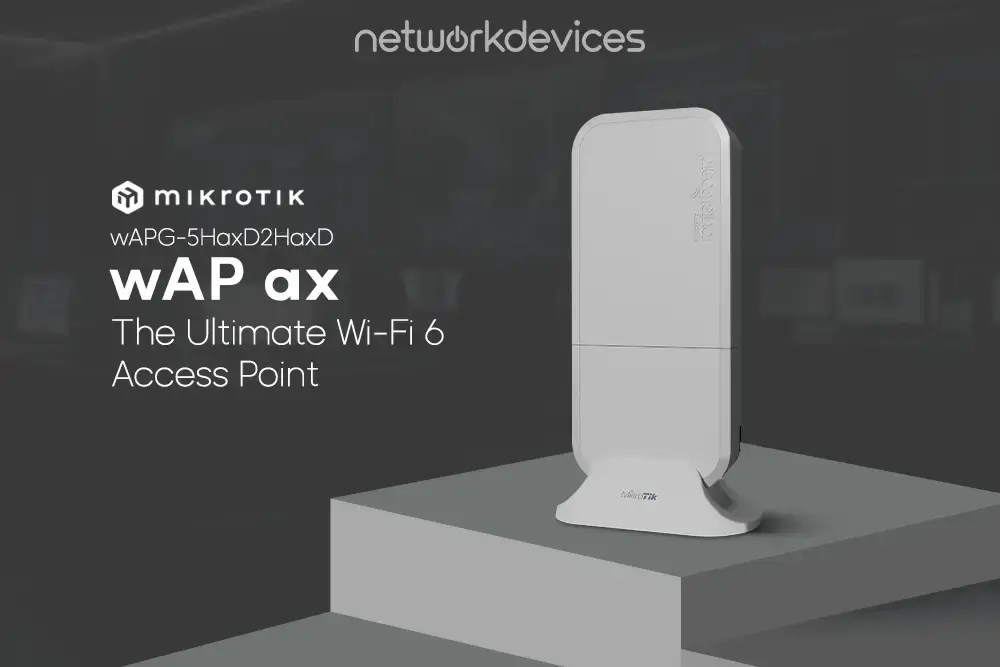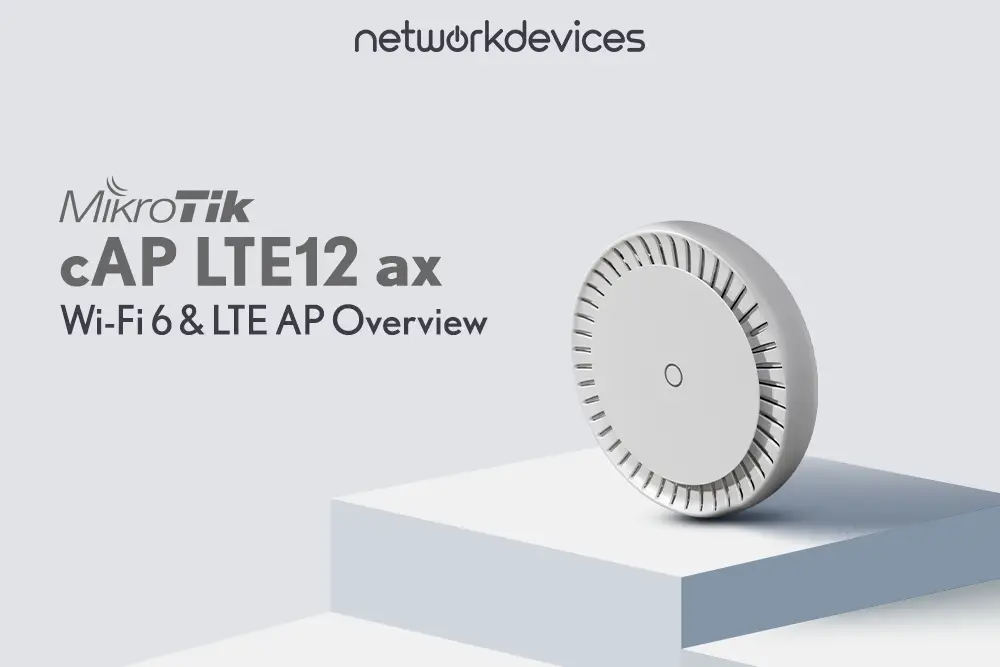In today's data-driven world, who really controls your information? Every file, transaction, and critical business decision handed over to external cloud providers comes with unclear policies and unknown risks. Your data is your most valuable asset—it deserves better than third-party control.
Introducing the MikroTik ROSE Data Server (RDS2216-2XG-4S+4XS-2XQ), a revolutionary all-in-one platform that integrates high-performance storage, networking, and computing capabilities, all under your complete control.
In this article, we'll explore the RDS2216's features, applications, setup process, and why it might be the ideal solution for your enterprise infrastructure needs.
Introducing the MikroTik RDS2216 Solution
Traditional IT setups separate networking, storage, and computing functions, leading to inefficiencies, high costs, and increased power consumption. The Mikrotik ROSE Data Servers shatters this model by delivering enterprise-grade performance in a single, integrated device—changing how businesses approach infrastructure.
MikroTik RDS2216: Core Features and Specifications
NVMe Storage Powerhouse & PCIe Architecture
- 20 U.2 NVMe Storage Slots: Ultra-fast, high-density storage for demanding workloads
- PCIe Architecture: Each drive connects with 2× PCIe 3.0 lanes (16 Gbps per drive)
- Total Bandwidth: The Entire disk plane has a 16× PCIe 3.0 connection to the CPU (128 Gbps total)
- Additional Storage: 2× M.2 SATA slots for flexible expansion options
High-Speed 100G Networking Capabilities
- 100G Connectivity: 2× 100G QSFP28 ports
- 25G Connectivity: 4× 25G SFP28 ports
- 10G Connectivity: 4× 10G SFP+ ports and 2× 10G Ethernet ports
- Management: 1× Gigabit Ethernet management port
- Expansion: SFF-8644 interface for additional connectivity options
- Switch Chip: 98DX4310 (same as in CRS510-8XS-2XQ) with L3HW offloading capabilities
Processing Power: 16-Core ARM CPU & RAM
- CPU: 16-core 2 GHz ARM 64-bit processor (AL73400/AWS Graviton 1)
- Memory: 32GB DDR4 RAM (ECC)
- Performance: Capable of 50 Gbps continuous write speeds over NVMe-TCP
RouterOS ROSE Edition: Optimized for Storage & Compute
- ROSE: Custom RouterOS variant specifically designed for storage and compute
- Advanced Features: NVMe-TCP, iSCSI, RAID support, BTRFS features (snapshots, compression)
- Container Support: Native OCI-compliant container support
Energy Efficiency & Enterprise Reliability
- Power Consumption: Only 80W idle, minimal increase under load (105W without attachments)
- Max Consumption: 286W fully loaded
- Redundancy: Dual hot-swappable power supplies
- MTBF: Approximately 200,000 hours at 25°C (22+ years)
- Operating Temperature: -20°C to +50°C
MikroTik RDS2216: Complete Technical Specifications
| Category | Specification |
| Product Code | RDS2216-2XG-4S+4XS-2XQ |
| CPU | CPUAL73400 16-Core @ 2000 MHz (ARM 64bit) |
| Memory | 32 GB ECC DDR4 RAM |
| Storage (OS) | 128 MB NAND |
| Management Ethernet | 1× 1G port |
| High-Speed Ethernet | 2× 10G ports |
| SFP+ Ports | 4× 10G ports |
| SFP28 Ports | 4× 25G ports |
| QSFP28 Ports | 2× 100G ports |
| Additional Interfaces | SFF-8644, 2× M.2 SATA slots |
| USB Ports | 2× (USB 3.0 Type A and USB 2.0 Type A) |
| Power Supplies | 2× hot-swappable (redundant) |
| Power Consumption | 105W (without attachments), 286W max |
| AC Input Range | 100-240V |
| Operating Temperature | -20°C to +50°C |
| Dimensions | 476 × 443 × 29 mm |
| Included Parts | 2× power cords, rackmount ears, rackmount rear support ears, K-90 fastening set |
Real-World Applications & Use Cases
Self-Hosted Cloud Infrastructure (MinIO & Nextcloud)
Deploy your own S3-compatible MinIO storage cluster—fully compatible with standard cloud APIs but without the unpredictable costs or security risks. Complete with enterprise-grade performance, your cloud storage stays under your control.
Implement Nextcloud for secure document collaboration with built-in BTRFS enterprise features like snapshots, compression, and subvolume transfers. Give your team the tools they need while maintaining data sovereignty.
High-Performance Database & Backup Solutions
Build redundant, high-speed database clusters with near-instantaneous failover and synchronization. The RDS2216 excels with PostgreSQL, MariaDB, and other mission-critical database workloads.
With 20 U.2 slots supporting hundreds of terabytes in a simple rack-mounted form factor, the system offers exceptional capacity for comprehensive backup strategies and long-term archiving.
Efficient Containerized Application Infrastructure
Forget bulky, power-hungry servers. With native container support, the RDS2216 runs monitoring, logging, and automation tools more efficiently. The built-in swap support prevents out-of-memory failures, ensuring smooth performance even with memory-intensive applications.
Centralized Storage for Branch Offices
Most branch office routers lack adequate built-in storage. With the RDS2216, they don't need it. Deploy NFS or SMB shares or even export block storage over NVMe-TCP or iSCSI, allowing lightweight routers to mount network storage instead of relying on limited local options.
This enables hundreds of routers to run containerized applications, store logs, and access shared data without requiring local storage—streamlining your entire network infrastructure.
Security-Enhanced Storage & Compliance
Data privacy isn't just important—it's increasingly required by regulation. With NVMe over TCP, TCG-Opal self-encrypting drives, and RouterOS built-in block device encryption, you can ensure data protection at every level without performance trade-offs.
Enabling Digital Independence
The world is moving toward local control for good reasons. With the RDS2216, you can host your own social networks (Pixelfed, Loops) or communication platforms (Matrix) on your infrastructure—giving communities, organizations, and privacy-conscious users true digital independence without external algorithms or monitoring.
Getting Started: RDS2216 Initial Setup & Configuration
Setting up the RDS2216 is straightforward for IT professionals familiar with networking equipment:
Initial Configuration Steps
1. Connect to the management port (default IP: 192.168.88.1)
2. Log in with the default username "admin" (no password initially)
3. Set an administrative password immediately
4. Configure WAN interfaces and routes for internet connectivity
5. Access the full management interface via WebFig or the dedicated Winbox application
Storage Management & Formatting
1. Navigate to System > Disks to view all available storage devices
2. Format drives as needed (EXT4 is recommended for container usage)
3. Configure storage shares, RAID arrays, or export block storage as required
4. Leverage BTRFS features for snapshot management and compression where appropriate
Container Deployment Guide
1. Install the container package via System > Packages
2. Create a virtual network bridge for container networking:
/interface bridge add name=docker /ip address add address=172.17.0.1/24 interface=docker
3. Enable container NAT for internet access:
/ip firewall nat add chain=srcnat action=masquerade src-address=172.17.0.0/24
4. Configure and run containers through the Container menu or CLI
The MikroTik Difference: No Subscriptions, Full Ownership
Perhaps the most compelling aspect of the RDS2216 is MikroTik's core business philosophy: "You buy it, you own it. Forever."
Unlike most enterprise solutions, which require ongoing subscriptions or software licenses, the RDS2216 does not charge recurring fees or have paywalls for advanced features.
This represents extraordinary long-term value and aligns perfectly with the product's central premise—taking back control of your infrastructure.
RDS2216 Performance Considerations Explained
Understanding the PCIe Architecture Balance
While some might question the use of PCIe Gen3 rather than Gen4, the reality is that in enterprise workloads, CPU performance typically becomes the limiting factor before PCIe bandwidth. Most SSDs can't fully saturate their theoretical interface speeds due to NAND flash limitations.
For enterprise environments where endurance, capacity, and cost-efficiency matter more than peak sequential speeds, the PCIe Gen3 architecture represents an optimal balance of performance and practical utility.
Network and Storage Integration Benefits
The latest RouterOS includes specific optimizations for ROSE storage enhancements, improved multi-threading, and better RAID/disk management. This ensures efficient workload distribution and seamless operation of both NVMe storage and high-speed networking functions.
Conclusion: Why Choose the MikroTik RDS2216?
The MikroTik ROSE Data Server represents a flexible networking and storage breakthrough for demanding enterprise environments. It combines reliable 100-Gigabit connectivity, ultra-fast NVMe storage support, and containerization capabilities in an energy-efficient package.
Stop relying on the cloud and take back control with this future-proof solution. With no subscriptions and a focus on pure, reliable performance, the RDS2216 is the smarter way to build your infrastructure.
You can also watch the video below for more detailed information on this topic.







 Deals
Deals







